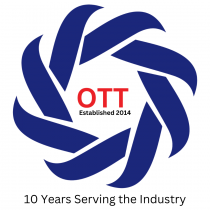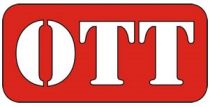The epinephrine auto-injector market is expected to grow at a CAGR of over 8% during the period 2019-2025
NEW YORK, April 24, 2020 /PRNewswire/ --
Read the full report: https://www.reportlinker.com/p05888071/?utm_source=PRN
The epinephrine auto-injector market is expected to grow at a CAGR of over 8% during the period 2019-2025.
The global epinephrine auto-injector market is expected to grow at a steady rate during the forecast period. The growth can be mainly attributed to the growing prevalence of anaphylaxis across demographics. Anaphylaxis is characterized as a potentially life-threatening systemic allergic reaction, which is most commonly triggered by medication, food allergies, or insect stings. In developed countries such as the US and the UK, the incidence of anaphylaxis is 40-500 per million persons. Anaphylaxis-associated mortality is estimated at 0.63-0.76 per million. In the US, up to 5% population suffers from this condition. Over the last several years, a rising number of clinical databases such as PubMed have captured the growing prevalence of anaphylaxis. Globally, allergies caused by food items, food additives, latex, and dust are increasing at a steady rate. Such allergies, including anaphylaxis, are the most commonly prevalent in industrially developed countries such as the US and the UK. Therefore, the growing incidence of anaphylaxis is likely to increase the high uptake of epinephrine as it the first-aid treatment option, thereby driving the global market.
The following factors are likely to contribute to the growth of the epinephrine auto-injector market during the forecast period:
-- Emergence of Innovative Solutions for Anaphylaxis Management
-- Increasing Demand for Generic Epinephrine Auto-injectors at Pharma/Retail Stores
-- Growing Demand for Self-administration of Drugs
-- Availability of Generic Versions of Auto-injectors
The study considers the present scenario of the epinephrine auto-injector market and its market dynamics for the period 2019?2025. It covers a detailed overview of several market growth enablers, restraints, and trends. The study offers both the demand and supply aspect of the market. It profiles and examines leading companies and other prominent companies operating in the market.
EPINEPHRINE AUTO-INJECTOR MARKET: SEGMENTATION
This research report includes a detailed segmentation by dosage, age group, end-user, and geography. The growing incidence of anaphylaxis in adults, especially in the elderly population, is the primary factor driving the growth of the high dose segment. As epinephrine is considered as the first-line treatment for anaphylaxis, the increasing recommendation of high dose by healthcare professionals (HCP) across the globe for adult patients is fueling the growth of the segment. Moreover, market players are also focusing on providing generic, low-cost products, which are increasing the demand for affordable treatment options for managing anaphylactic reactions.
Several social and emotional factors contribute to the high prevalence of anaphylaxis in teenage and adult groups, including risk-taking behaviors with eating and disease denial. Adults with peanut allergy have more severe reactions than children. HCPs recommend a high as well as safe dose (usually 0.3 mg) of epinephrine auto-injectors to the patient group aged 12 years and above. Furthermore, anaphylaxis in the elderly population tends to be life-threatening and requires intensified medical intervention. Therefore, managing the high risk of anaphylaxis in this group, especially in elderly people, is expected to drive the uptake of epinephrine auto-injectors.
The burden of anaphylaxis among children is growing, hence it requires quick and effective management. Government and regulatory bodies are providing safeguards to prevent fatal reactions among children in the 6-12 years age group. Epinephrine through auto-injectors acts fast and can rapidly treat the most dangerous symptoms in children, including throat swelling, difficulty breathing, and low blood pressure. Thus, it is always been recommended to make ready epinephrine auto-injectors for children in schools to avoid fatal conditions due to anaphylaxis, thereby driving the segment growth.
In 2019, the below 6 years segment accounted for a 10% market share of the global epinephrine auto-injector market. Children in this age group are prescribed to be treated with 0.15 mg/0.1 mg dose capacity. An estimated 130% increase in emergency room visits for anaphylaxis among children aged 4 years old and younger reported between 2005 and 2014. Since the management of anaphylaxis in this age group is becoming a major concern among HCPs and parents, vendors are focusing on introducing low-cost epinephrine auto-injectors for this age group.
The individual end-user segment accounted for the highest share in 2019. The segment is likely to grow with the highest growth rate mainly due to the growing demand for self-management of anaphylaxis. Individuals carry epinephrine auto-injectors for the treatment of sudden anaphylaxis shock. As the prevalence is growing rapidly worldwide, self-management is becoming increasingly important. Hence, the segment is likely to emerge as a major revenue generator during the forecast period.
HCPs in hospitals & clinics are using epinephrine auto-injectors for the emergency management of anaphylaxis. The market is growing at a healthy rate on account of the high adoption of these devices by emergency departments in hospitals and clinics. The availability of skilled HCPs with knowledge and expertise also attracts many patients to hospitals and clinics. Large and medium-sized hospitals are equipped with sophisticated healthcare infrastructure for emergency management of anaphylaxis. Hence, the share of this segment is likely to grow at a steady growth during the forecast period.
Market Segmentation by Dosage
-- High
-- Low
Market Segmentation by Age Group
-- Below 6 Years
-- Between 6 & 12 years
-- Above 12 years
Market Segmentation by End-user
-- Hospitals & Clinics
-- Individuals
-- Others
INSIGHTS BY GEOGRAPHY
North America dominates the epinephrine auto-injector market. The presence of a large disease population, coupled with better access to treatment for anaphylaxis, is the primary factor for its high market share. The strong presence of key vendors is also another reason for high product uptake in the region. Moreover, the rise in the anaphylactic patient pool and the launch of generic substitutes, which help to treat the condition effectively in adults and children groups, are likely to boost the growth during the forecast period.
Europe is the second-largest market. Better disease awareness, high healthcare spending, and the presence of key vendors are the primary factors for high market shares. Germany, France, the UK, Spain, and the Netherlands are the major revenue contributors to the region. The Europe market is likely to be driven by the increasing treatment-seeking population due to increased awareness of anaphylactic reactions.
Japan, Australia, and South Korea are the major revenue contributors in APAC for epinephrine auto-injectors. A low treatment-seeking population associated with social stigma in select regions, low awareness and comparatively minimal access to healthcare services, especially in developing countries are a few factors that limit growth potential in the region. However, the growth in disease prevalence, improvement in healthcare spending, increase in awareness for food allergies, including anaphylaxis, are expected to fuel the growth in the region.
Market Segmentation by Geography
-- Europe
o Spain
o Germany
o Netherlands
o France
o UK
-- North America
o US
o Canada
-- APAC
o South Korea
o Japan
o Australia
-- Latin America
o Brazil
o Argentina
-- MEA
o Turkey
o Israel
o South Africa
INSIGHTS BY VENDORS
The global epinephrine auto-injector market is highly consolidated and is characterized by the presence of a few established vendors holding the majority of the market share. Vendors are offering several branded as well as generic epinephrine auto-injectors and are competing based on factors in terms of regulatory approvals, safety features, accurate dosing, convenience, technology, marketing strategies, and distribution channels.
Key Vendors
-- Mylan
-- Teva Pharmaceutical Industries
-- Amneal Pharmaceuticals
Other Vendors
-- Adamis Pharmaceuticals
-- ALK-Abelló
-- Bioprojet PHARMA
-- Bausch & Lomb
-- kaléo
-- Novartis
KEY MARKET INSIGHTS
The analysis of the epinephrine auto-injector market provides sizing and growth opportunities for the period 2019-2025.
-- Offers sizing and growth prospects of the market for the forecast period 2020-2025.
-- Provides comprehensive insights on the latest industry trends, forecast, and growth drivers in the market.
-- Includes a detailed analysis of growth drivers, challenges, and investment opportunities.
-- Delivers a complete overview of segments and the regional outlook of the market.
-- Offers an exhaustive summary of the vendor landscape, competitive analysis, and key strategies to gain competitive advantage.
Read the full report: https://www.reportlinker.com/p05888071/?utm_source=PRN
About Reportlinker
ReportLinker is an award-winning market research solution. Reportlinker finds and organizes the latest industry data so you get all the market research you need - instantly, in one place.
__________________________
Contact Clare: clare@reportlinker.com
US: (339)-368-6001
Intl: +1 339-368-6001
View original content:http://www.prnewswire.com/news-releases/the-epinephrine-auto-injector-market-is-expected-to-grow-at-a-cagr-of-over-8-during-the-period-20192025-301046937.html
SOURCE Reportlinker



